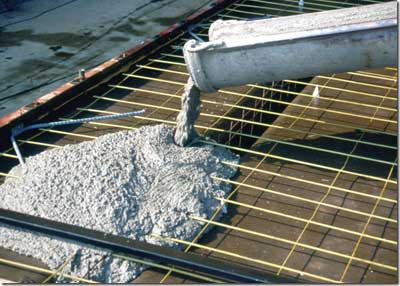In last month’s blog post, we reviewed the popular custom home floor plans that are available in new home construction. Picking your floor plan has a lot to do with your individual preferences, along with the utility of your living space. We continue this series on custom building with a look at the foundation of your home. While you may not necessarily choose the foundation for your home, it is useful to know more about the types of foundations that are typically used in home building.
The Importance of a Home Foundation
Your home’s foundation is a critical aspect of your home’s lifespan and safety. In simplest terms, the foundation is the anchor to the rest of the house. The foundation must be able to support the weight of the home and protect it from the elements of earth (in the form of seismic activity), wind, and water (e.g., underground water or moisture). If your foundation is not solid, it cannot handle the stress of shifting ground and water over time and could result in structural damage to most of your home.
Factors for the Right Foundation
Factors that may go into selecting the right foundation for your home may include how you plan to use the space in your home. For example, if you want to use space below ground level, then choosing a more secured foundation that provides adequate protection from the elements is important. This ensures that any living space “below ground” is free from the damaging effects of moisture.
If you live in a warmer climate, the right foundation may be determined by the hazards of that climate – for example, Florida homes stay away from wood foundations because termites pose a risk to the homes. Homes in Florida are also victim of hurricanes and strong storms, and so they require solid foundations to withstand hurricane force winds.
The type of soil, moisture content, and even the topography of the lot also plays a role in selecting the type of foundation for your home. For example, a good builder may sample the soil and conduct a “perc test”, which measures if the soil will percolate water through it.
Common Types of Home Foundations
While there is a wide range of foundations for homes, we consider the five more common ones you will find in today’s homes.
- Concrete Slab Foundations: Probably the most common type of foundation, the concrete slab foundation lays on top of the ground. Before the slab is poured, plumbing is laid out in the ground for access to the main plumbing system. Slab foundations are usually about four to eight inches and do best in warmer climates where the ground may not freeze and thaw.
- Cinder Block Foundations: Cinder block foundations use fabricated concrete blocks, that are easily placed and stacked to form a home’s foundation. Block foundations can hold more weight of the home due to their solid construction but can be susceptible to problems if not properly installed.
- Stone Foundations: You will normally find stone foundations in older homes. Stone foundations use large stones that are cemented together. If these foundations are not full waterproofed, they can deteriorate over time and cause damage to the home through cracking or moisture intrusion.
- Crawl-Space Foundations: Crawl space foundations have a space between the ground and the home (about four feet). This space is not heated, but typically is vented so that there is free-flowing air to avoid any moisture build-up below the home. Some homeowners may even use the crawlspace for storage or for home components like a furnace or water heater.
- Wood Foundations: A wood foundation may use a combination of wood and concrete the form the home’s foundation. Wood foundations use treated wood for mold, fungus, and a variety of pests. This type of foundation is more expensive to build but provides home protection from the cold over concrete versions.
If you are working with Prominent Builders and Design on your custom home, speak with your consultant about the type of foundation that will be used for your home. Talk to them about the advantages and disadvantages of your home’s foundation, and the possible issues to consider over time.

